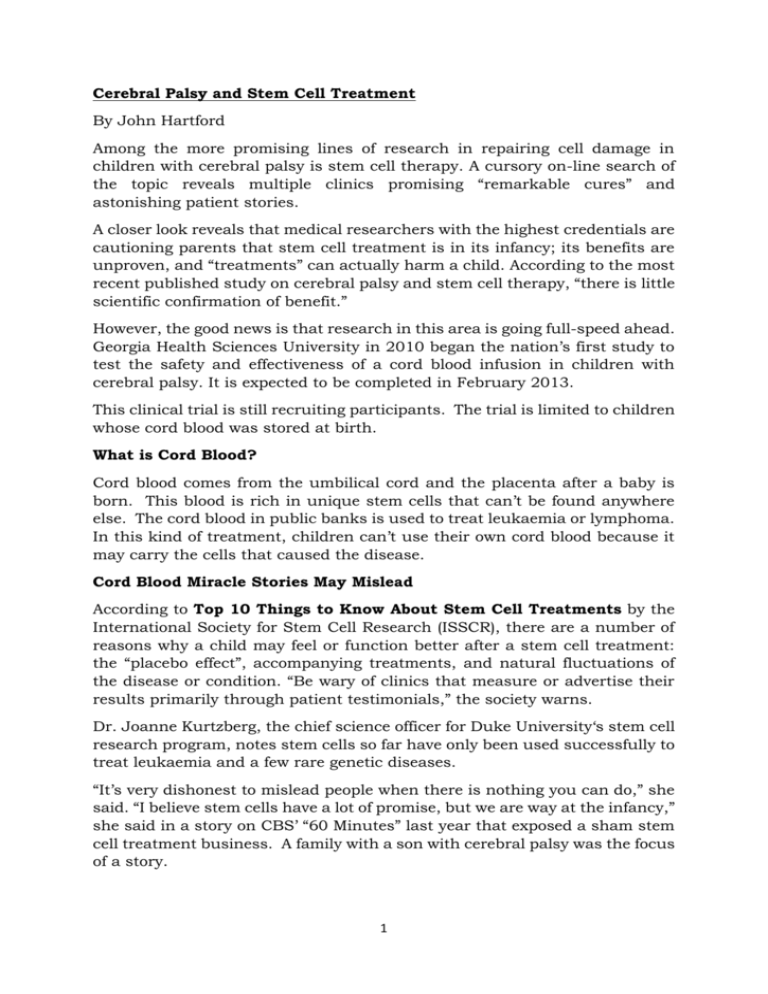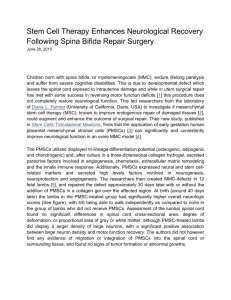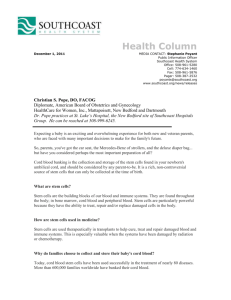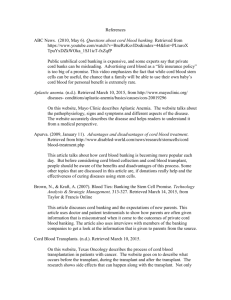Cerebral Palsy and Stem Cell Treatment
advertisement

Cerebral Palsy and Stem Cell Treatment By John Hartford Among the more promising lines of research in repairing cell damage in children with cerebral palsy is stem cell therapy. A cursory on-line search of the topic reveals multiple clinics promising “remarkable cures” and astonishing patient stories. A closer look reveals that medical researchers with the highest credentials are cautioning parents that stem cell treatment is in its infancy; its benefits are unproven, and “treatments” can actually harm a child. According to the most recent published study on cerebral palsy and stem cell therapy, “there is little scientific confirmation of benefit.” However, the good news is that research in this area is going full-speed ahead. Georgia Health Sciences University in 2010 began the nation’s first study to test the safety and effectiveness of a cord blood infusion in children with cerebral palsy. It is expected to be completed in February 2013. This clinical trial is still recruiting participants. The trial is limited to children whose cord blood was stored at birth. What is Cord Blood? Cord blood comes from the umbilical cord and the placenta after a baby is born. This blood is rich in unique stem cells that can’t be found anywhere else. The cord blood in public banks is used to treat leukaemia or lymphoma. In this kind of treatment, children can’t use their own cord blood because it may carry the cells that caused the disease. Cord Blood Miracle Stories May Mislead According to Top 10 Things to Know About Stem Cell Treatments by the International Society for Stem Cell Research (ISSCR), there are a number of reasons why a child may feel or function better after a stem cell treatment: the “placebo effect”, accompanying treatments, and natural fluctuations of the disease or condition. “Be wary of clinics that measure or advertise their results primarily through patient testimonials,” the society warns. Dr. Joanne Kurtzberg, the chief science officer for Duke University‘s stem cell research program, notes stem cells so far have only been used successfully to treat leukaemia and a few rare genetic diseases. “It’s very dishonest to mislead people when there is nothing you can do,” she said. “I believe stem cells have a lot of promise, but we are way at the infancy,” she said in a story on CBS’ “60 Minutes” last year that exposed a sham stem cell treatment business. A family with a son with cerebral palsy was the focus of a story. 1 Storing Cord Blood The publicity surrounding stem cell treatments has spawned a whole new private industry for the collection and storage of cord blood. Costing about $2,000 for harvesting, followed by storage fees, the procedure isn’t worth it, say mainstream organizations. The American Academy of Paediatrics and the American Society for Blood and Marrow Transplantation have come out against recommending private cord blood banking, because, they say, there is little evidence the process will pay off for most families – even though the number of experimental therapies involving cord blood is growing. On the other hand, the groups encourage donating cord blood to public cord blood banks. Public cord blood banks accept cord blood donations for free. If the donation passes the requirements of size and quality for transplant use, it is saved and listed on a registry that can be searched by patients. People donate because they want to help save or better a life. Blood stored at a public bank, however, may not be available if a child later needs his own blood. This is because the blood may have been discarded after a certain length of time, or someone else has already used it. So how to decide whether to bank a child’s cord blood? It would make sense that parents whose child is born with a low Apgar score or other sign of impairment discuss the cord blood issue with their obstetrician. The Parents Guide to Cord Blood Donation contains extensive information about cord blood banking, including donation locations and mail-in donations. Buyer Beware Parents of children with cerebral palsy, desperate for any treatment that will give their child a better life, often are preyed upon by unscrupulous businesses whose only goal is to make a quick profit. Anyone considering alternative treatments for their child should investigate the credentials of the people offering the treatment, and should be wary of treatments offered in countries without strong healthcare oversight and regulations. The ISSCR Patient Handbook on Stem Cell Therapies offers advice on what questions to ask and what to consider if you’re looking at this kind of treatment. 2






